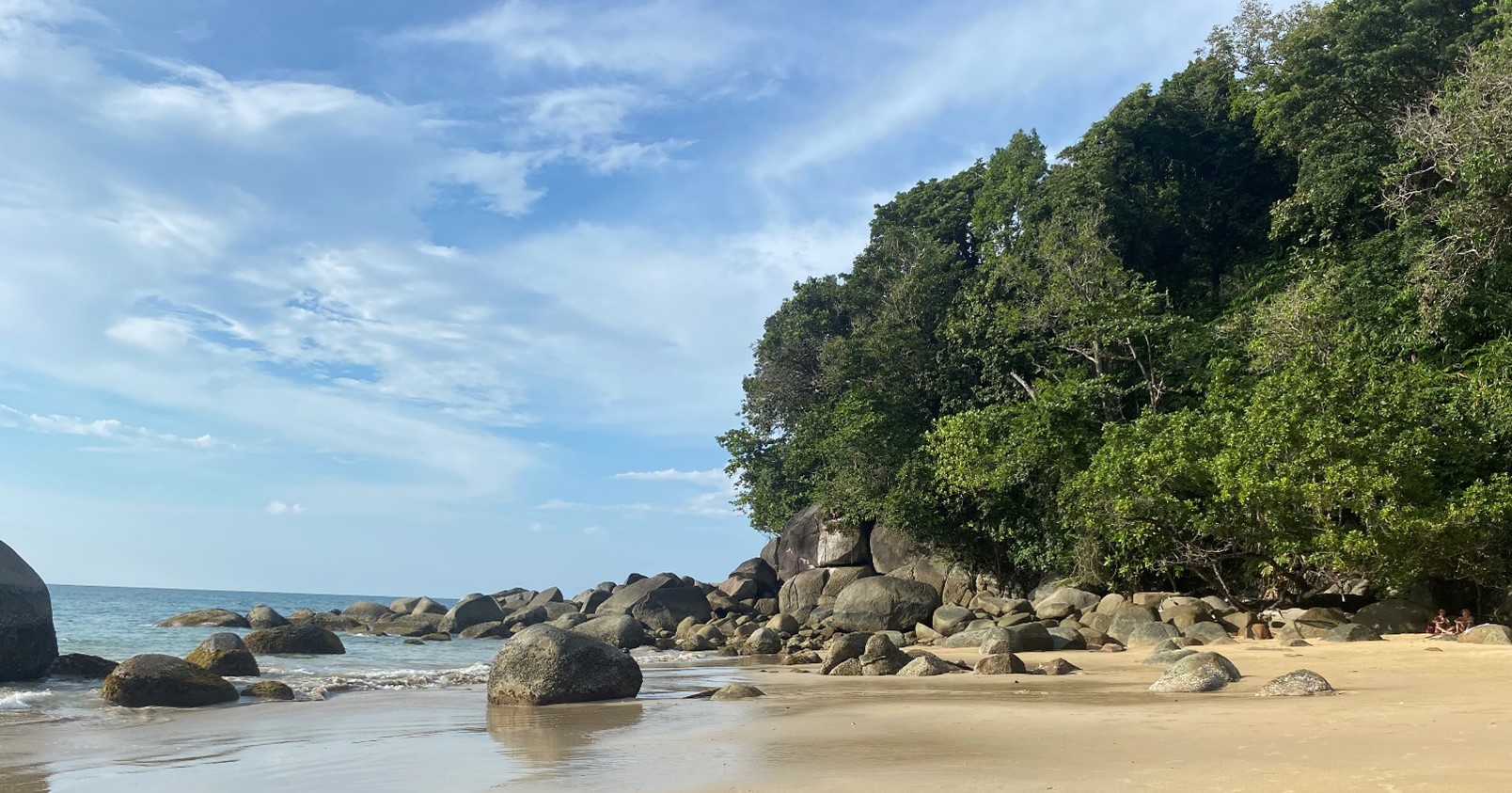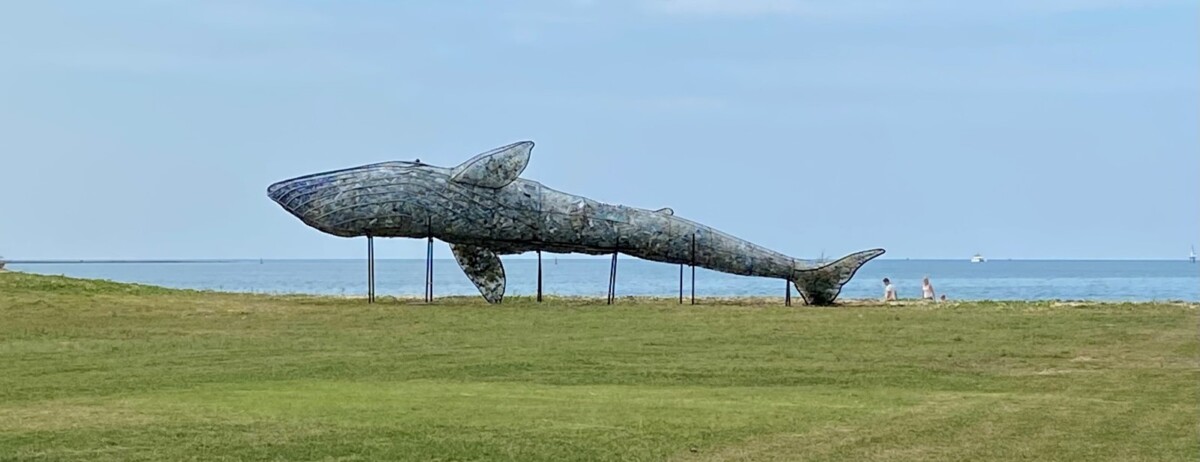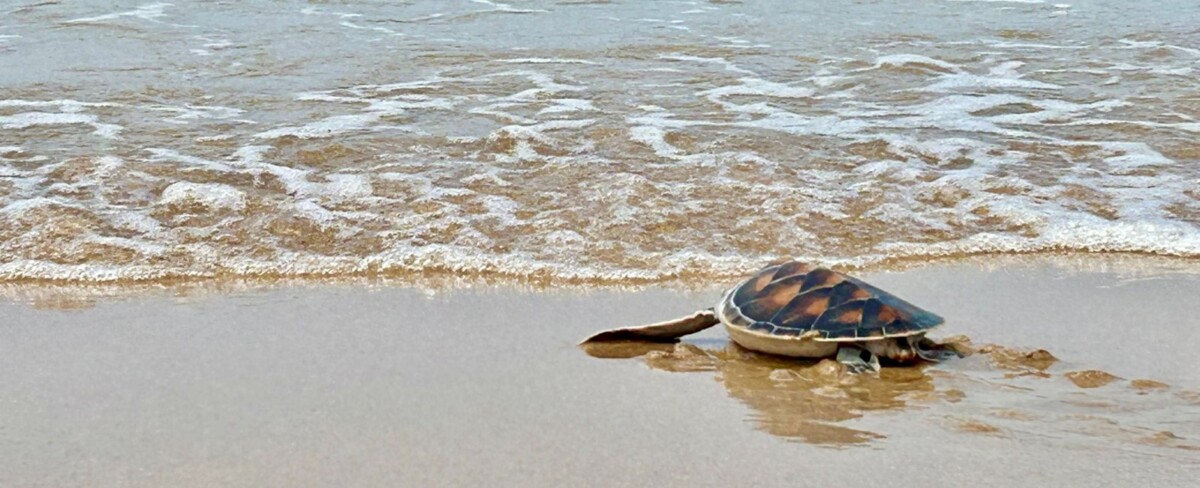
Tourism in Thailand from a sustainability perspective
Tourism is responsible for 8% of global greenhouse gas emissions and the global tourism industry is expanding rapidly. The number of international holidaymakers is increasing by 3-5% per year. Tourists contribute to climate change in many ways – for example transport and consumption of goods and services. Tourism shapes the nature and culture of the destination and consumes local resources. (Dunne 2018.)
The disadvantages of holiday flights are undeniable but in this reflection, I won´t focus on assessing the sustainability of air travel, because carbon dioxide emissions from air travel cannot be influenced by the individual passenger except by not flying. I’m thinking more from the perspective of how individual traveler can influence sustainability on their journey and how sustainability issues could be better addressed in Thailand and especially Khao Lak area. This article is based on my own observations during my visit to Khao Lak area November – December 2023 and reflecting on my previous experiences working there as a tour in 2004.
So why do we travel?
Travelling to a new environment gives you access to new customs, cultures and people. Understanding different customs and cultures and getting to know different people builds tolerance and gives different perspectives on life. Traveling to new places gives an opportunity to discover different tastes, to see different kinds of nature, plants and animals. Traveling is also a way to refresh and gives an opportunity to see daylight in the middle of a dark and cold winter.
Why do many countries compete for tourists, despite the consuming effect?
It´s because of revenue. I have been working in travel industry in Thailand, Austria and Finland and I can understand the fact that tourism provides a source of income for many people around the world. It is an important livelihood, creating local entrepreneurship, jobs and developing local infrastructure. That is why tourism has grown and developed, but on what terms? Of course, we would like tourism to be sustainable and regenerative. Would virtual traveling ease the travel bug in the future or would it be best to raise prices so dramatically that tourist numbers would naturally fall permanently? In Thailand, the tsunami and corona pandemic devastated the tourism industry and now, after difficult times, as the tourism industry recovers, it can be frightening to imagine a future in which tourist numbers would be permanently lower. How would Thai people cope if tourist numbers would fall? Would it be possible to generate a living wage with fewer tourists or find a job in other industries? If the travel and tourism industry is wanted to remain viable, it must become sustainable. The most important factor in achieving and promoting sustainable tourism is the cooperation of all parties that are directly or indirectly involved in tourism activities, i.e. tourists, tourism businesses, politicians and public authorities (Azam, Alam, Hafeez 2018).
Sustainability, what does it include and how I see it as a tourist point of view in Thailand?
Culturally sustainable tourism involves preserving cultural heritage, respecting and learning from local customs and cultures (Härmä & Nasib 2023). One way to learn about local culture is through excursions. I interviewed local tourism entrepreneur Aree Nopparit of Southern Andaman Travel, that offers tour services in Khao Lak area. She offers sightseeing tours, temple visits and tours to animal sanctuaries. Nopparit (2023) believes that the range of tours on offer should generally be expanded in a more sustainable direction. For example, a speedboat trip in the archipelago has a greater impact on the environment than cooking classes or tours where tourists can visit and learn about local industries such as rubber plantations, tin mining or the garment industry (Nopparit 2023). Learning about local traditional livelihoods and lifestyles contributes to cultural sustainability and helps tourists understand the origins of many products and appreciate the work behind them.
Economic sustainability means balanced and sustainable growth that is not based on long-term debt or the destruction of natural resources. Economic development is sustainable when the earth’s natural resources are renewed faster than they are used. (Härmä & Nasib 2023.) Tourism generates economic growth for the destination country and the local population. Tourists can influence where revenues go. By using locally and sustainably produced accommodation, restaurants, excursions and other services, the local population benefits the most from the revenue. Even you want to support the local economy, the most sustainable way is not to buy anything unnecessary and not supporting branded copies, which the markets are full of in Thailand.
A sustainable economy also includes the moderate use of non-renewable resources, the exploitation of renewable resources, waste minimization and efficient recycling (Härmä & Nasib 2023). There is a lot of room for improvement in the way waste management and recycling works in Thailand. More attention should also be paid to the potential of the circular economy. Lots of plastic waste ends up in nature causing problems to animals living on the land and sea. Like here in Finland, plastic straws could be banned and collected plastic bottles should be better compensated, so that they are less likely to be left into the environment. Now you get 6 THB (0,16 €) from 1 kg of collected and recycled plastic bottles (Nopparit 2023). As a tourist you can reduce plastic waste by carrying your own shopping bag and refusing plastic straws and cups.

Socially sustainable development requires equality and equity between members of society and the realization of fundamental rights and basic living conditions (Härmä & Nasib 2023). Thailand has a friendly and socially accepting culture, which is based on Buddhist philosophy that all beings have an equal right to experience happiness. Social well-being is enhanced by a sense of community and a family-oriented lifestyle. However, there is corruption and great disparities in income between rich and poor, which divides the population socially into different classes. Some Thais live in very primitive, modest and poor conditions. Tourism revenues can support the development of basic local living conditions.
Environmental sustainability includes the conservation of plant and animal diversity and the sustainable use of natural resources (Härmä & Nasib 2023). In Thailand, these things could be greatly influenced.
Radical landscape change caused by large hotel chains should be limited. Large hotel resorts cause deforestation, which is replaced by a built environment. Instead of large multinational hotels, tourists can make better choices by choosing smaller, nature-friendly, locally owned accommodation that follows good practices in nature and supports local entrepreneurship. Tourists tend to use many times more water and electricity than local people. Water and electricity use should also be used wisely and sparingly.
Nature-based excursions often consume nature and fragile natural sites should be subject to restrictions on the number of tourists. Prices could be higher to achieve economic sustainability. Many sites (especially national parks) have good guidelines for respecting nature, but the more tourists concentrated in one place, the greater the impact. For example, on the popular islands of Similan and Phi Phi, speedboats transport large numbers of tourists daily to visit the islands, dive and snorkel. These areas are particularly rich in underwater life, fish species and coral reefs, which suffer from overconsumption by speedboats and tourists and less amount of tourists would benefit nature. Environmental taxes could be introduced in order to preserve the environment in popular tourist destinations (Azam, Alam, Hafeez 2018). Also all the services that restrict animal rights should be banned and replaced by conservation and restoration measures.
In Thailand, the main carbon emissions from tourist areas are from fuel and energy consumption (Nguyen, Gheewala, Sophea, Areerob, Hashimoto, Pimonsree, Prueksakorn 2020). More attention should be paid to improving public transport to reduce emissions. Currently, private cars and motorcycles are very dominant in Thailand, and tourists, are offered cheap taxi services instead of public transport. At the societal level, emissions from energy consumption and transport can be reduced by switching to green energy sources and fossil-free fuels. The government should support companies that use green low-carbon technologies and green energy sources in their operations to reduce carbon emissions and prevent overuse of natural resources (Azam, Alam, Hafeez 2018).
Agri-tourism is considered to have good basis for the development of sustainable tourism from the perspectives of economic sustainability and environmental protection (Nguyen etc. 2020).

After making more sustainable choices, could we also have regenerative tourism?
Key to regenerative tourism is that the traveler could act in such a way that the destination is a little bit better when they leave, than what it was when they arrived. Regenerative tourism is not about constant growth, but about constant vitality. We need to think about how tourism can make destinations and the communities that live there thrive and flourish. (Jaakkola 2022.)
Local service providers should point out more of those actions that support regenerative tourism and redirect tourists to play an active role in sustainable tourism by offering for example tree planting excursions. Also tourists should take that active role, for example cleaning up litter on beaches or other areas or contributing to animal conservation. I´m sure that tourists also have the will to protect Thailand’s beautiful and diverse natural and cultural environment for future generations.
Eco-Warrior's Guide_ Sustainable Travel from Tea Martikainen on Vimeo.
Video is made with InVideoAI artificial intelligence using pictures from Pixabay. CC BY-NC 4.0 (Martikainen 2023).
Writer: Tea Martikainen, Master degree program in Future-oriented Sustainable Development, Savonia University of Applied Sciences
References:
Dunne, Daisy 2018. Tourism responsible for 8% of global greenhouse gas emissions, study finds. Carbon Brief. https://www.carbonbrief.org/tourism-responsible-for-8-of-global-greenhouse-gas-emissions-study-finds/. Referred 18.12.2023.
InvideoAI, 2023. Video made by Tea Martikainen with artificial intelligence using pictures from Pixabay.
Härmä, Tomas & Nasib, Nea 2023. Kestävän kehityksen keskeiset käsitteet. Opetushallitus. https://www.oph.fi/fi/opettajat-ja-kasvattajat/kestavan-kehityksen-keskeiset-kasitteet. Referred 19.12.2023.
Jaakkola, Saana 2022. Vastuullisuus on saanut rinnalleen uudistavan termin, mutta mitä uudistava matkailu oikein tarkoittaa? Valpas Media. https://valpas.media/artikkelit/ymparisto-ja-ilmasto/vastuullisuus-on-saanut-rinnalleen-uudistavan-termin-mita-uudistava-matkailu-tarkoittaa/. Referred 19.12.2023.
Nguyen, Hong Anh Thi, Gheewala, Shabbir H, Sophea, Tip, Areerob, Thanita, Hashimoto, Kiyota, Pimonsree, Sittichai & Prueksakorn, Kritana 2020. Comparative carbon footprint assessment of agricultural and tourist locations in Thailand, 2020. Journal of Cleaner Production, 269, 122407. https://doi.org/10.1016/j.jclepro.2020.122407
Nopparit, Aree 2023. Entrepreneur. Southern Andaman Travel. Interview 5.12.2023.
Muhammad, Azam, Mahmudul, Alam & Muhammad Haroon, Hafeez 2018. Effect of tourism on environmental pollution: Further evidence from Malaysia, Singapore and Thailand. Journal of Cleaner Production. 190, 330-338. https://doi.org/10.1016/j.jclepro.2018.04.168